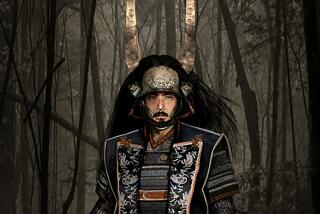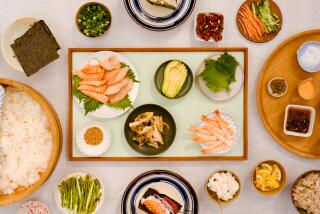NONFICTION - Dec. 19, 1993
- Share via
BEYOND THE TANABATA BRIDGE: Traditional Japanese Textiles edited by William Jay Rathburn (Thames & Hudson in association with The Seattle Art Museum: $45) . Due to recurring government sanctions in Japan, the general populace had to follow strict guidelines for the material, color and pattern of their clothing. Since they were forbidden to use luxury fabrics, kasuri (thread resist) was woven at home to clothe the family.
Clothing was designed for durability. Sashiko stitching--a simple running stitch--was used to join layers of cloth to extend the life of a garment. In subdued colors and not as luxuriously decorated as the kimono of Edo-period Japan, the finished garments are nonetheless quite beautiful.
The scholarly essays in this catalogue, written by experts in the field of Japanese textiles, explore the history of everyday textiles and give overviews of weaving, dying and stitching techniques throughout Japan and Okinawa. Among the examples illustrated is a vest with a design of two large turnips, which was worn in the earthy kyogen comic theater; a fireman’s coat decorated with the thunder-god and a tiger to give him courage; robes of the Ainu, decorated with magical designs to keep evil spirits from entering the openings.
This history of Japanese textiles will captivate the casual reader as well as the textile devotee, though the lack of a glossary is a handicap to the uninitiated.
More to Read
The biggest entertainment stories
Get our big stories about Hollywood, film, television, music, arts, culture and more right in your inbox as soon as they publish.
You may occasionally receive promotional content from the Los Angeles Times.










